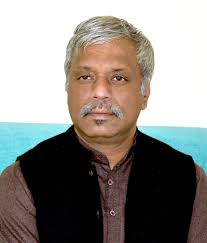Uttam Kumar Sinha, expert on Indus Water Treaty, is guest at Explained.Live

India’s Indus Waters Treaty (IWT) with Pakistan, often praised as a successful example of long-term water cooperation, is under renewed scrutiny. In a recent Explained.Live session hosted by The Indian Express, Dr. Uttam Kumar Sinha — a Senior Fellow at the Manohar Parrikar Institute for Defence Studies and Analyses — offered timely insight into the government’s decision to place the treaty “in abeyance.” Sinha, a leading expert on water security, believes India’s policy is entering a new era.
Why the Indus Treaty Still Matters
Signed in 1960, the Indus Waters Treaty divides six rivers between India and Pakistan. India controls the eastern rivers — Beas, Ravi, and Sutlej — while Pakistan gets the western rivers — Indus, Jhelum, and Chenab. India retains limited rights to use the western rivers for non-consumptive purposes, such as hydropower.
Despite multiple conflicts and diplomatic breakdowns, the treaty has remained intact for more than six decades. That consistency often gets viewed as a testament to its strength. However, recent terror attacks and changing geopolitical realities have forced India to reconsider its position.
What’s Changed?
The recent terrorist attack on pilgrims in Jammu and Kashmir triggered a firm response from the Indian government. Dr. Sinha emphasized that India can no longer separate water agreements from national security concerns. “Water and blood can’t flow together,” he said, echoing a sentiment shared by several Indian leaders.
India’s move to pause the treaty sends a strong diplomatic message. It highlights that cross-border cooperation requires trust and accountability, especially when civilian lives are at risk.
A Treaty That Needs an Update
Sinha believes the treaty no longer reflects present-day challenges. “It was designed in a different era,” he said. At the time, issues like climate change, rising populations, and water scarcity were not central concerns. Now, they define water security.
He also pointed out that the treaty heavily favors Pakistan. India, though an upper riparian state, gets control of only 20% of the total river system’s waters. That imbalance limits India’s ability to manage its water needs effectively.
India’s Underused Leverage
Although India has rights to use the western rivers for certain purposes, it hasn’t fully used them. Several hydroelectric projects have faced delays due to international arbitration or opposition from Pakistan. According to Sinha, India must assert its legitimate rights without breaching the treaty’s terms.
“This isn’t aggression,” he said. “It’s a reasonable use of available rights.” He believes India should build more hydropower projects and improve storage capabilities. These steps can strengthen India’s energy security and create diplomatic leverage.
Legality of ‘Abeyance’
The term “abeyance” doesn’t appear in international law. However, it suggests a pause, not a withdrawal. Sinha clarified that India hasn’t violated the treaty. Instead, it has chosen to withhold further cooperation until security concerns are addressed.
“States have the right to protect their core interests,” he said. He emphasized that India remains within its legal boundaries. By pushing for a renegotiation, India signals that long-standing treaties must evolve with time.
Addressing Humanitarian Concerns
Critics argue that water disruptions could affect Pakistan’s civilian population. However, Sinha assured that India isn’t cutting off water supplies. It continues to respect the flow patterns defined by the treaty. The pause is symbolic — a call for updated terms, not punishment.
“India isn’t weaponizing water,” he explained. “It’s simply asking for fairness and accountability.”
What Comes Next?
Sinha outlined four possible paths forward:
- Bilateral Dialogue – Although tensions remain high, direct talks could allow both countries to revise outdated clauses.
- Full Utilization of Rights – India can begin using its share of water more effectively by developing hydroelectric and irrigation projects.
- Regional Cooperation – Forums like SAARC could promote shared water solutions across South Asia.
- Technology and Data – Improved monitoring, glacier research, and flood control systems could give India better control and foresight.
He stressed that India must adopt a proactive approach rather than a reactive one. Waiting for the next crisis isn’t a sound strategy.
Public Engagement and Awareness
Sinha’s appearance on Explained.Live offered a rare public discussion on a complex issue. Water treaties don’t usually get attention unless there’s a conflict. This session helped audiences understand how deeply intertwined water and national security have become.
He also encouraged policymakers and citizens to view water not just as a resource, but as a strategic asset. “India’s water security is part of its national strength,” he concluded.
Conclusion
India’s move to pause the Indus Waters Treaty marks a turning point. It shows that cooperation must come with accountability, especially when national security is involved. As Uttam Kumar Sinha highlighted, the treaty — while historic — must evolve to stay relevant.
The session reminded viewers that diplomacy, like rivers, needs to flow with time. A fair and modernized agreement could offer both India and Pakistan a more balanced and secure future.






